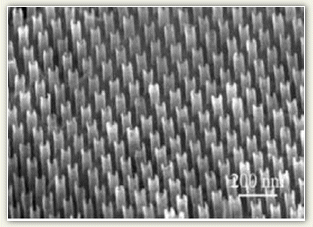Magnolia Solar developing full spectrum PV, with single junction cells
 On Aug. 23, Magnolia Solar said it demonstrated high-voltage Indium Gallium Arsenide (InGaAs) quantum well waveguide solar cells, which are being developed by the company.
On Aug. 23, Magnolia Solar said it demonstrated high-voltage Indium Gallium Arsenide (InGaAs) quantum well waveguide solar cells, which are being developed by the company.
The company plans to develop the technology for defense and space operations and develop a similar technology for the more common Copper Iridium Gallium Selenide (CIGS) photovoltaic market.
The InGaAs cells are more expensive since they use some of the same high-cost compounds in Gallium Arsenide-based photovoltaics, hence they’re intended for the defense and space industries, according to Magnolia Solar CEO Dr. Ashok K. Sood.
“Our goal is to get well above 30 percent efficiency,” he said.
The most efficient GaAs multi-junction cells on the market today rely on multiple semiconducting layers to absorb more of the sun’s spectrum.
“This is a single-junction cell with quantum structures in it,” Sood said.
GaAs cells are also intended for the best solar conditions, and their production capacity falls off quickly as the sun wanes or is obscured.
“What we’re trying to do is get optimum efficiency all day long,” Sood said.
Sood and Dr. Roger Welser, Magnolia's chief technical officer, were at the Solar Energy and Technology Conference in San Diego, where Wesler gave the presentation, High-Voltage Quantum Well Waveguide Solar Cells.
"The absorption of photons, and the generation of electrical current, is reduced in conventional thin-film solar cell designs. Using a waveguide to help trap scattered light inside the cell can dramatically increase the amount of current that can be generated,” Wesler said in a press release. “In the past, the challenge with implementing waveguide solar cell structures has been maintaining the voltages necessary to achieve high conversion efficiency. In this work, we demonstrated InGaAs quantum well waveguide photovoltaic devices with record-high operating voltages."
The device Magnolia is developing uses nanostructures to absorb light at high voltages and currents, creating a more efficient cell. It also uses a nanostructure coating that allows the device to absorb all of the spectrum, according to Sood.
The technology is not ready for sale yet.
“We’re in development stage,” Sood said. The company is now making proposals for the next steps now.
“The next step is to demonstrate a complete working cell,” he said.
The company also is looking into developing products for the lower-cost SIGS market that is well over 20 percent efficient at converting sunlight into electricity. At this point, however, the company has filed patents for the technologies, and Sood could not comment further on the technology.
The company is working with colleagues at the Rensselaer Polytechnic Institute, Kopin Corp., the College of Nanoscale Science and Engineering (CSNE), and the New York State Energy Research and Development Authority (NYSERDA). It will work on research and development in Albany, where CSNE is located, which is supported by $158 million in federal and state funding, according to Sood.
Image courtesy of Magnolia Solar.



